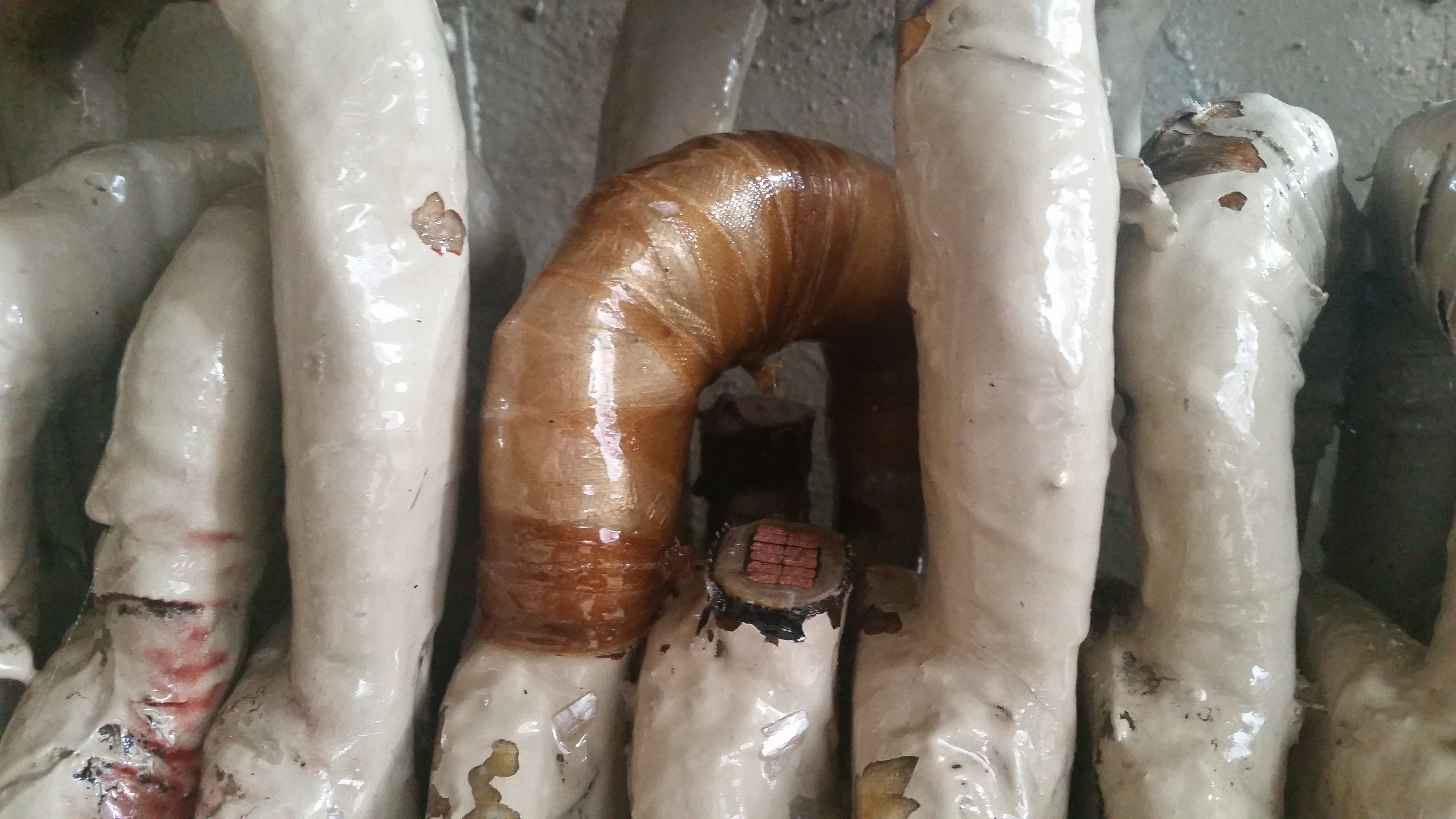
A COMPLEX REPAIR ON AN AGED 6.60kV HYDRO GENERATOR
Sidewinders’ case studies help you understand the performance, quality and value of our services.ISSUEDuring recent annual maintenance of a vertical hydro generator, a stator coil was damaged as the rotor was being removed by the client. Damage to the coil was extensive, with bare copper exposed where it had been hit. In cases like this, the utility company generally has several options for a repair based on the outcome of the visual inspections, electrical testing and whether or not spare coils are available. The available options are:
RESOLUTIONUpon arrival at client’s site, the location of the damaged coil was found to be directly underneath the upper bracket, which made it physically challenging and difficult to access. After tracing the circuit out, our staff discovered that the coil was connected to the adjacent coil of a phase lead, meaning that the coil would be subjected to almost full voltage (3,811-volts to ground). The visual inspection determined that the coil suffered significant damage. The top strands of the coil were exposed and had been cut into. Due to the extent of damage to the coil, a localized repair was not possible. In addition the client did not have any spare coils; therefore, we could not complete a half coil splice. We were left to consider the two remaining options: Option 1) Cut and remove the coil from the circuit:Advantages:
Disadvantages:
Option 2) Rewind::Advantages:
Disadvantages:
After discussing the advantages and disadvantages of the final two options with the utility’s management, it was agreed that an attempt should be made to cut the coil out of the circuit. Insulation removal of the series connection of the damaged coil and the adjacent coil revealed complex repair problems. The 3-turn coil had an external transposition, and embrittlement of the strand and turn insulation caused by thermal deterioration was found to be extensive. With a fire blanket surrounding other coils, the strands were separated one at a time using a small torch. The leads of the damaged coil were then cut off with a hacksaw blade. Strands from coils on either side of the damaged coil were stripped and formed into a series loop. Considerable care was taken in forming the loop, due to the cracking insulation. As the individual strands were brazed, Nomex was inserted between the turns to avoid possible shorts. Voids were filled with 3M Scotchfil putty. Next, five half-lapped layers of mica tape saturated with Astro 3104 epoxy was applied followed by one half-lapped layer of epoxy-soaked glass tape. RESULTSThis delicate repair was tested successfully and the generator was returned to service at full load; thus saving the utility considerable expense and down time. Although this repair was one of good quality, it is not considered a permanent solution. However, this repair has given the utility the opportunity and time necessary to schedule a rewind, rather than being in a forced outage situation. If you are looking for expert solutions for your generator rotor and stator components, contact Sidewinders today for an evaluation of your project. We are ready to get to work. Are you? |


